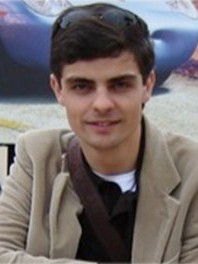resumo
An anion templated double cyclization strategy to synthesize [2]catenanes in which two identical acyclic pyridinium receptor motifs interweave around a chloride anion template is described. Ring closing metathesis (RCM) of the preorganized orthogonal precursor chloride complex facilitates the isolation of [2] catenanes in very high yields. X-ray crystal structures provide an insight of the supramolecular forces responsible for chloride anion templated efficacy and recognition. Removal of the chloride anion template generates topologically unique interlocked binding cavities for anions. H-1 NMR anion binding investigations demonstrate the catenanes to be highly selective hosts for chloride in preference to more basic monocharged oxoanions. In aqueous solvent media containing 30% water, such catenanes exclusively bind chloride, under which conditions no binding of acetate or dihydrogen phosphate is observed. Molecular dynamic simulations in the solution phase are used to account for the catenanes' anion recognition properties.
palavras-chave
OLEFIN METATHESIS CATALYSTS; STABILITY-CONSTANTS; ROTAXANE SYNTHESIS; CATENANES; INTERLOCKING; PSEUDOROTAXANES; MACROCYCLE; MACHINES; RING
categoria
Chemistry
autores
Evans, NH; Allinson, ESH; Lankshear, MD; Ng, KY; Cowley, AR; Serpell, CJ; Santos, SM; Costa, PJ; Felix, V; Beer, PD
nossos autores
agradecimentos
N. H. E. wishes to thank the EPSRC for a DTA studentship. M. D. L. wishes to thank the EPSRC and GE Healthcare for a CASE-supported studentship. C. J. S. also wishes to thank the EPSRC for a CASE sponsored studentship (in conjunction with Johnson-Matthey) and for post-doctoral funding (PhD Plus). K.-Y. N. wishes to thank the Clarendon Fund and the Overseas Research Student Awards Scheme for a scholarship. We are grateful to Diamond Light Source for the award of beamtime on I19 (MT1858) and to the beamline scientists for help and support. S. M. S. acknowledges FCT for a PhD grant (SFRH/BD/29596/2006). P. J. C. thanks FCT for the postdoctoral grant SFRH/BPD/27082/2006. V. F. acknowledges the financial support from FCT under the project PTDC/QUI/68582/2006 with co-participation of the European Community funds FEDER, QREN and COMPETE.




